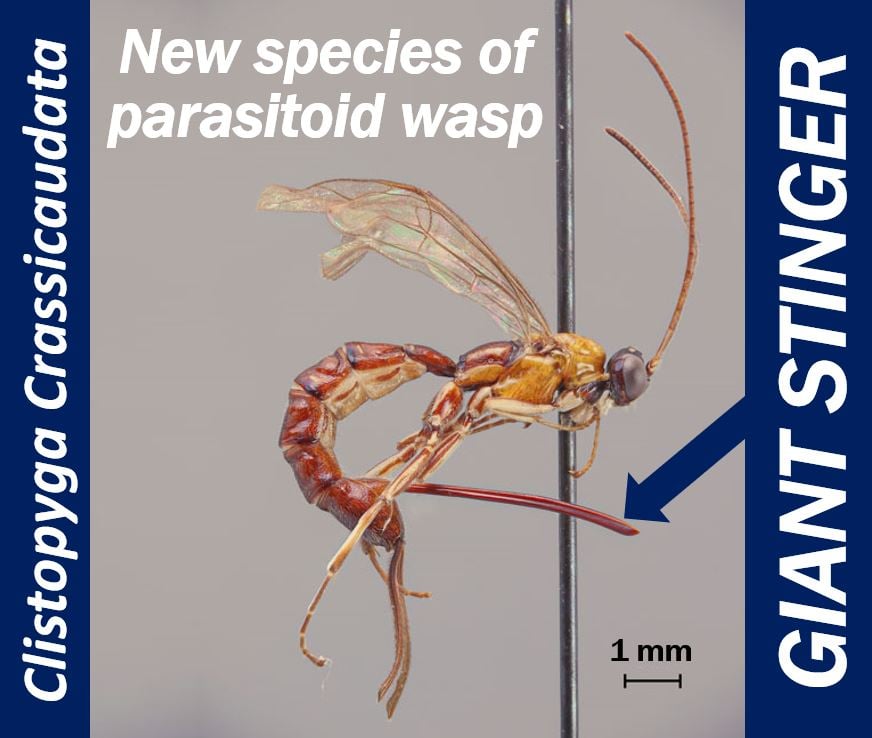Scientists have discovered a parasitoid wasp with a huge stinger. They discovered the new parasitoid wasp species in western Amazonia, i.e., between the Andes and the Amazon jungle. The wasp not only uses its stinger to inject venom but also to lay eggs.
The scientists who discovered the parasitoid wasp have dubbed it Clistopyga crassicaudata.
The insect’s stinger is both extremely long and also very wide compared to those of other parasitoid wasp species.
Professor in Biodiversity Research Ilari E. Sääksjärvi, who works at the University of Turku, Finland, said:
“I have studied tropical parasitoid wasps for a long time, but I have never seen anything like it. The stinger looks like a fierce weapon.”
Prof. Sääksjärvi and colleagues wrote about their study and findings in the journal Zootaxa. The other authors are Edgard Palacio (Instituto Colombiano Agropecuario, Colombia), Francisco Díaz (Universidad Centrooccidental Lisandro Alvarado Venezuela), Santiago Bordera (Centro Iberoamericano de Biodiversidad, Spain).

Parasitoid wasp has a huge stinger
The scientists discovered the new species of parasitoid wasp in an extremely diverse transitional zone. Specifically, the zone between the Amazonian lowland rainforest and the Andes mountain range.
This wasp is different to other species due to its surprisingly huge stinger.
Female hornets, bees, and wasps have a stinger, which they use for laying eggs or injecting venom.
Parasitoid wasps typically have a long ovipositor for laying eggs. An ovipositor is a tubular organ through which female insects or fishes deposit eggs.
Having a long ovipositor is useful for reaching potential host animals that live inside trees, for example.
The female wasp either deposits the egg inside the host or injects venom to paralyze it.
Clistopyga genus
This newly discovered parasitoid wasp belongs to the Clistopyga genus. It is a rare genus that specializes in depositing eggs inside spiders or spider egg-sacs.
The wasp first seeks out the potential spider host and then paralyzes it with a rapid venom injection. The female wasp lays her eggs on the spider. The hatching larvae devour the spider, which is paralyzed. If there are any spider eggs or hatchlings, they will also eat them.
The authors say they do not yet know which spider this species of parasitoid wasp prefers.
Prof. Sääksjärvi added:
“The giant stinger of the current species is very likely a highly sophisticated tool as well, but unfortunately we can only guess at its purpose.”

